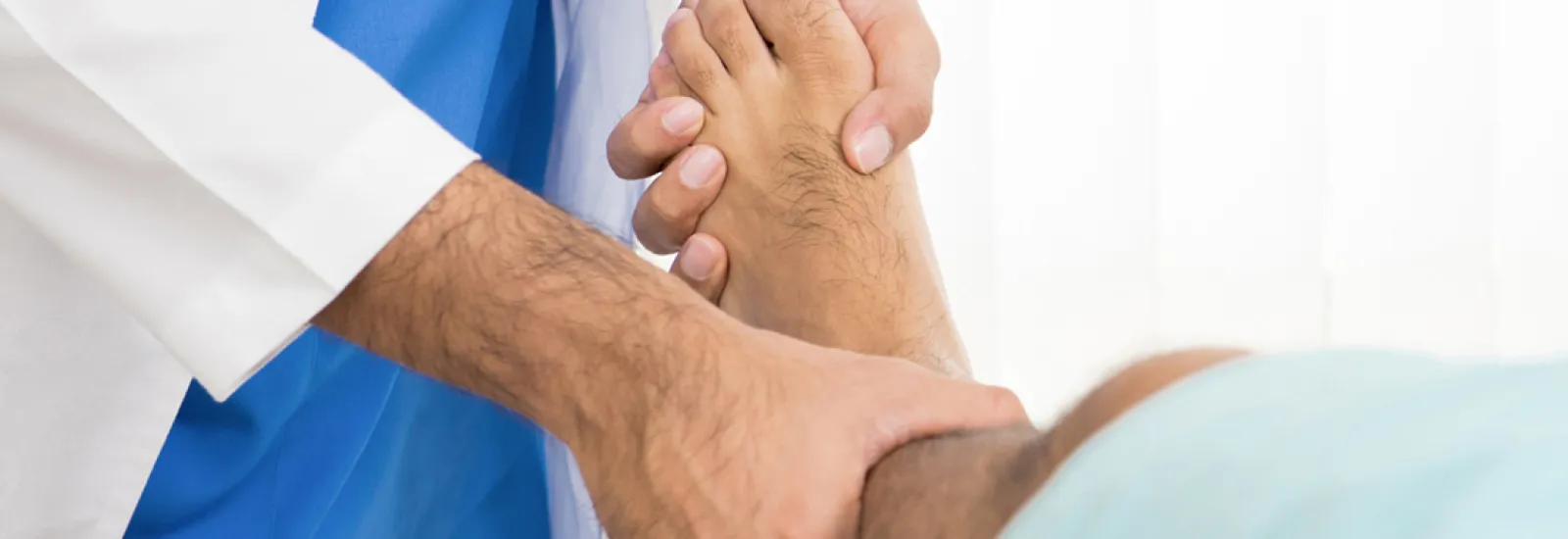
Explore treatment options for lymphedema
Lymphedema refers to swelling in the arms or legs and is most commonly caused by the removal of or damage to lymph nodes as a part of cancer treatment. A blockage in the body's lymphatic system prevents lymph fluid from draining normally, creating fluid buildup that leads to swelling.
Although there is presently no cure for the condition, it can be managed with early diagnosis and diligent care and treatment of the affected limb. Understanding how to recognize lymphedema is the first step to diagnosing and treating it as quickly as possible.
Signs and symptoms 
According to The Mayo Clinic, the following symptoms occur in the affected arm or leg:
- Swelling of part or all of the arm and leg, including fingers and toes
- A feeling of heaviness and tightness
- Restricted range of motion
- Aching or discomfort
- Recurring infections
- Hardening and thickening of the skin (fibrosis)
Swelling caused by lymphedema can range anywhere from mild and hardly noticeable changes in the size of the affected arm or leg, to extreme changes that make the limb difficult to use.
Lymphedema can be either primary or secondary, meaning it can occur on its own (primary) or can be caused by another disease or condition (secondary). Secondary lymphedema is far more common.
Causes
Primary lymphedema is a rare, inherited condition caused by problems with the development of the lymph vessels in the body. Secondary lymphedema is caused by any condition or procedure that damages lymph nodes or lymph vessels, including surgery to remove lymph nodes or lymph vessels, cancer, radiation treatment for cancer, and infection.
Lymphedema can occur after any cancer or treatment affecting the flow of lymph through the lymph nodes, such as removal of lymph nodes. It might develop within days or many years after treatment. The National Cancer Institute says most lymphedema develops within three years of surgery.
Therapy and treatment options
Treatment for lymphedema focuses on reducing the swelling.
- Exercises: Light exercises to move the affected limb might encourage lymph fluid drainage and help prepare a patient for everyday tasks, such as carrying groceries. Exercises shouldn't be strenuous or tiresome but focus on gentle contraction of the muscles in the affected arm or leg. A Certified Lymphedema Therapist can provide exercises that might help.
- Wrapping the affected arm or leg: Bandaging the entire affected limb encourages lymph fluid to flow back toward the trunk of the body. The bandage should be tightest around the fingers or toes and loosen up as it moves up the arm or leg.
- Massage: Manual lymph drainage is a special type of massage that might encourage the flow of lymph fluid out of the affected arm or leg. Various massage treatments might benefit people with active cancer. However, massage isn't for everyone. Patients should avoid massage if they have a skin infection, blood clots, or active disease in the involved lymph drainage areas.
- Pneumatic compression: This type of treatment involves a sleeve worn over the affected arm or leg, connected to a pump that intermittently inflates it and puts pressure on the limb, moving lymph fluid away from the fingers or toes.
- Compression garments: Long sleeves or stockings made to compress the affected arm or leg encourage the flow of the lymph fluid out of the affected limb. Wear a compression garment when exercising the affected limb. Some people require custom-made compression garments, so it's best to seek the assistance of a professional to ensure proper fit.
- Complete decongestive therapy (CDT): CDT is comprehensive management of lymphedema involving manual lymphatic drainage, compression, exercises, and skin care.
The Reid Health rehabilitation team helps individuals of all ages regain lost function related to injuries or illnesses such as lymphedema and returns patients to their normal activities as independently as possible. For more information on our services, call one of our outpatient rehab locations: Richmond (765) 983-3092, Eaton (937) 456-1195, or Connersville (765) 827-7964.

